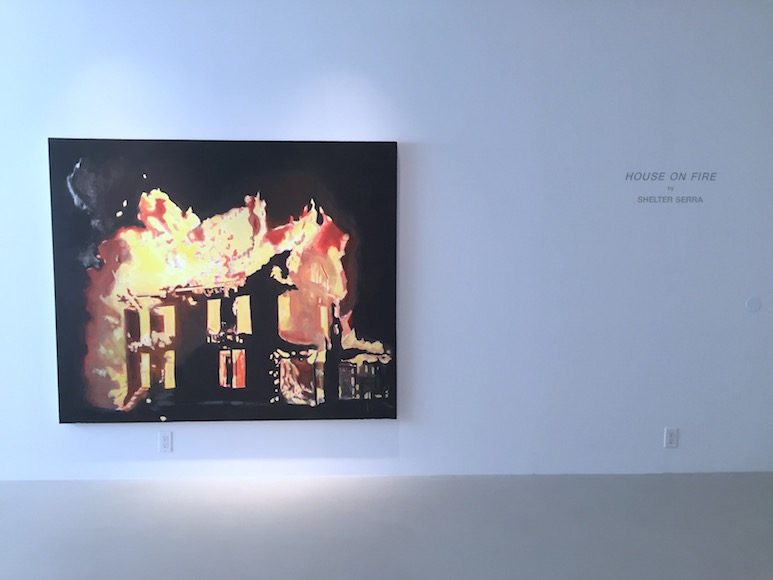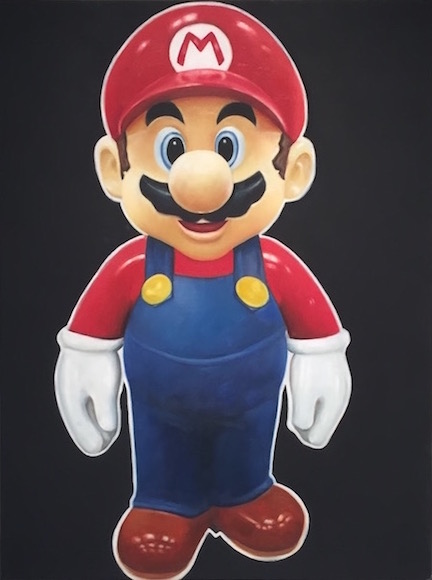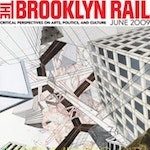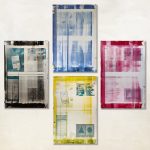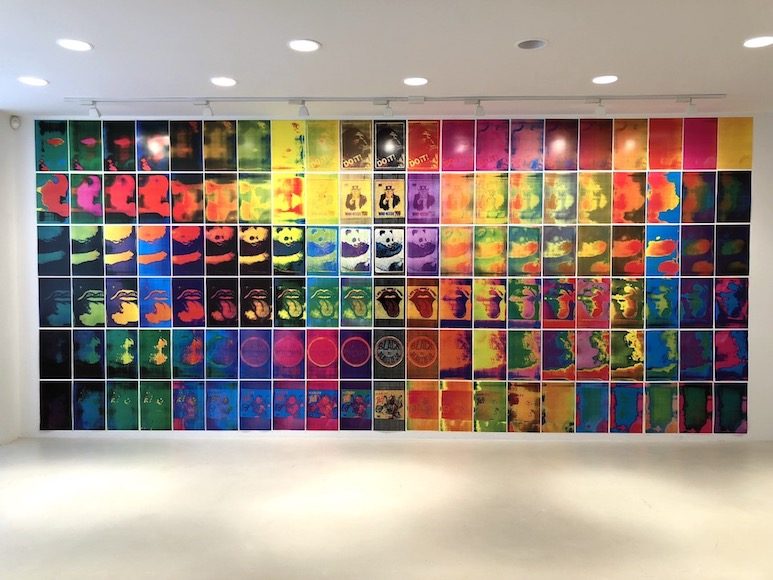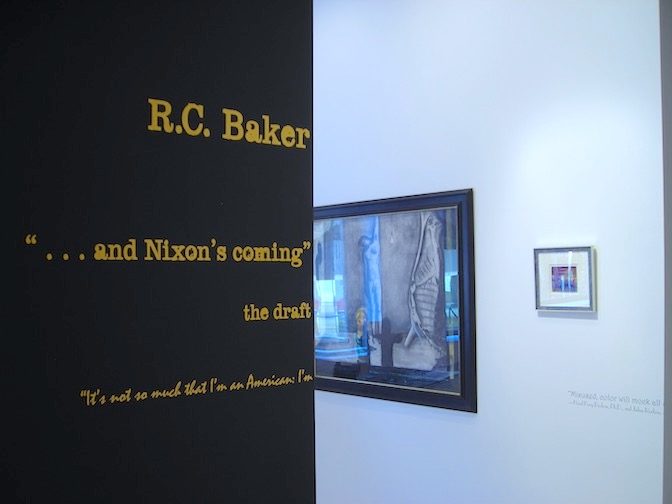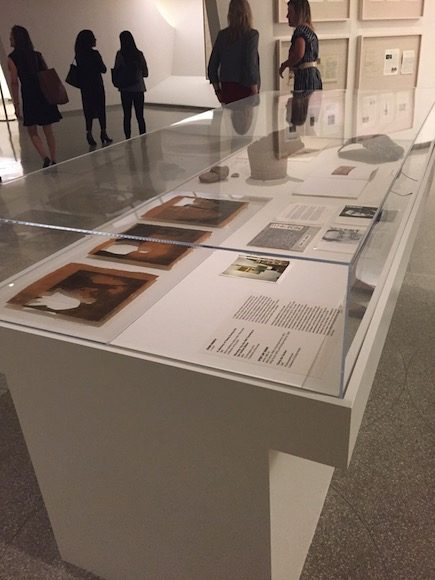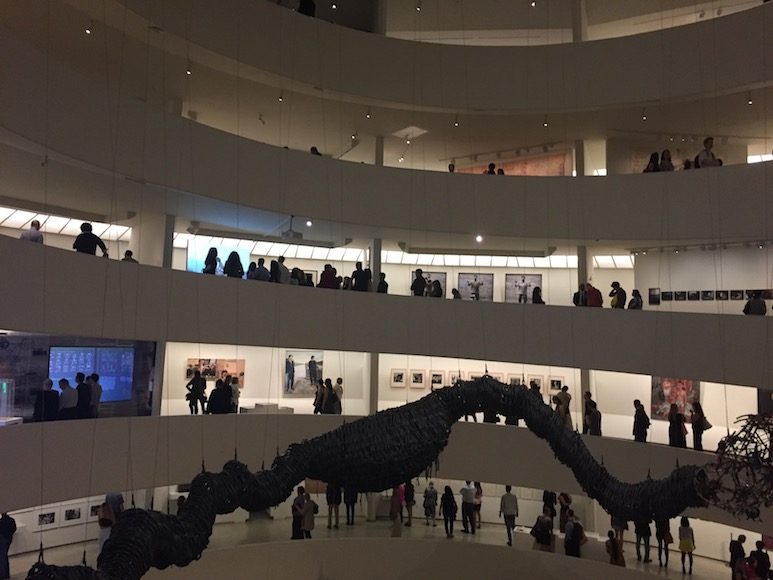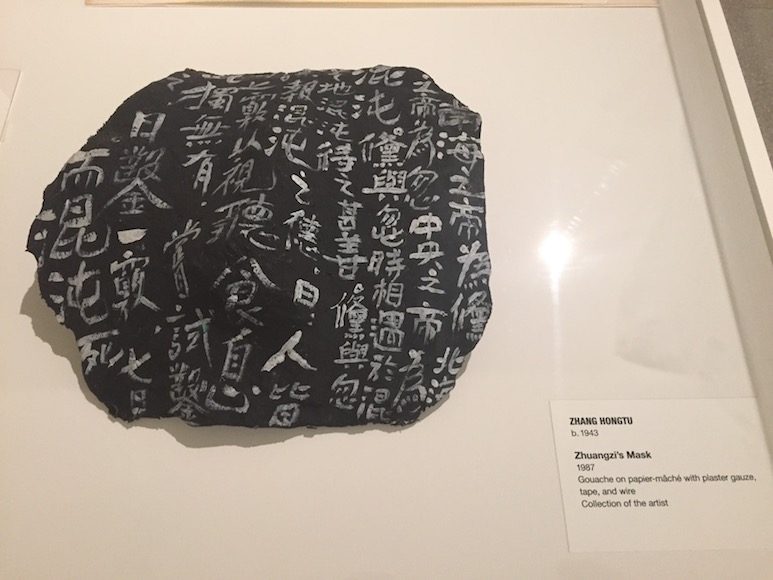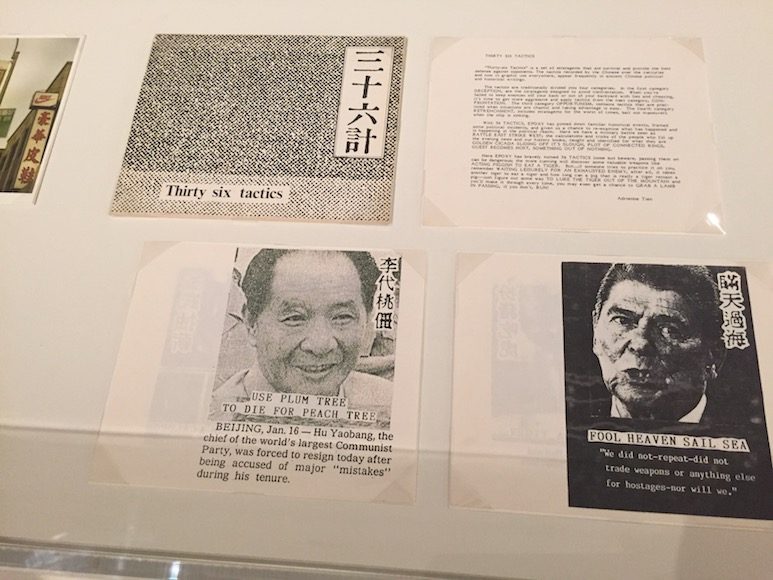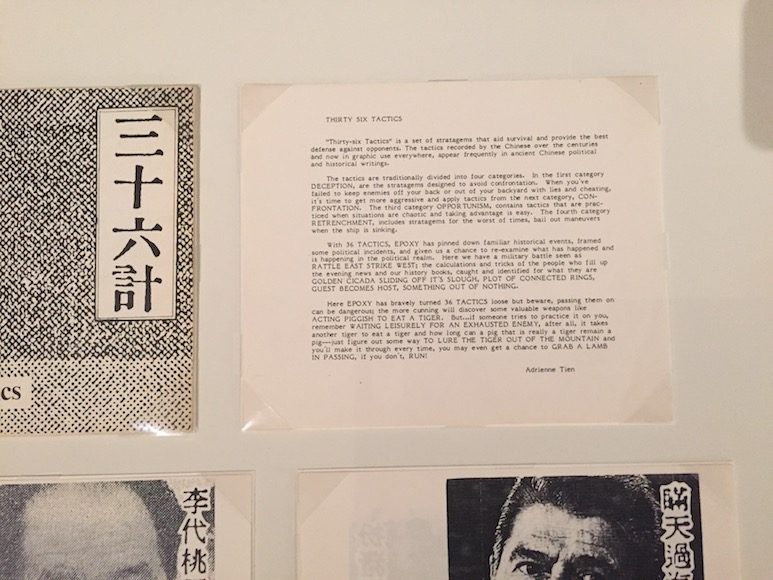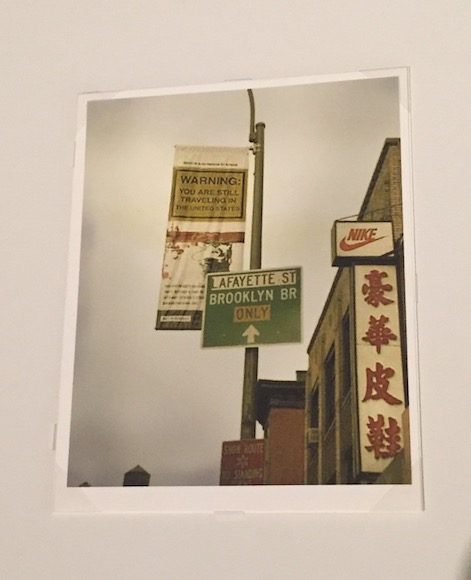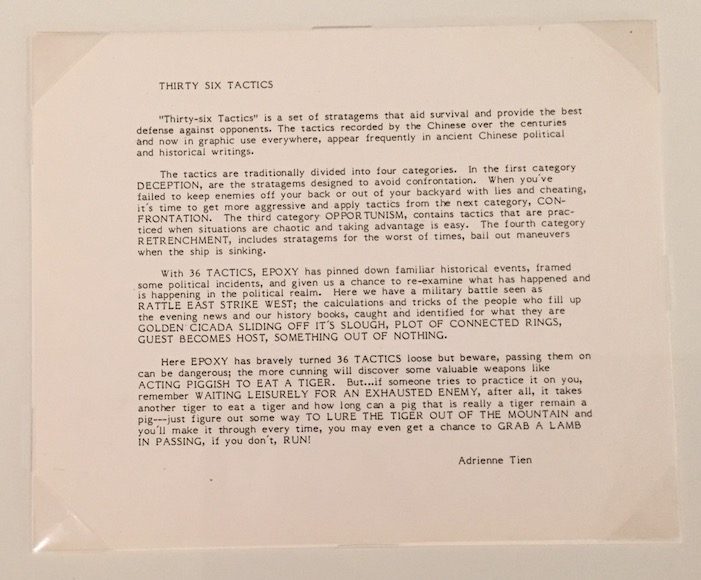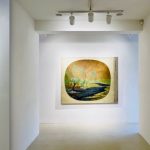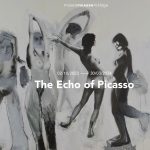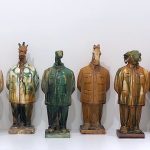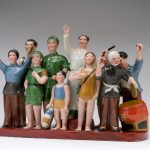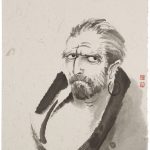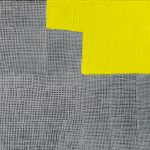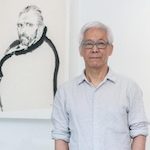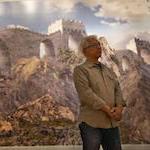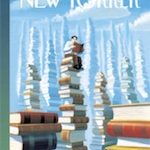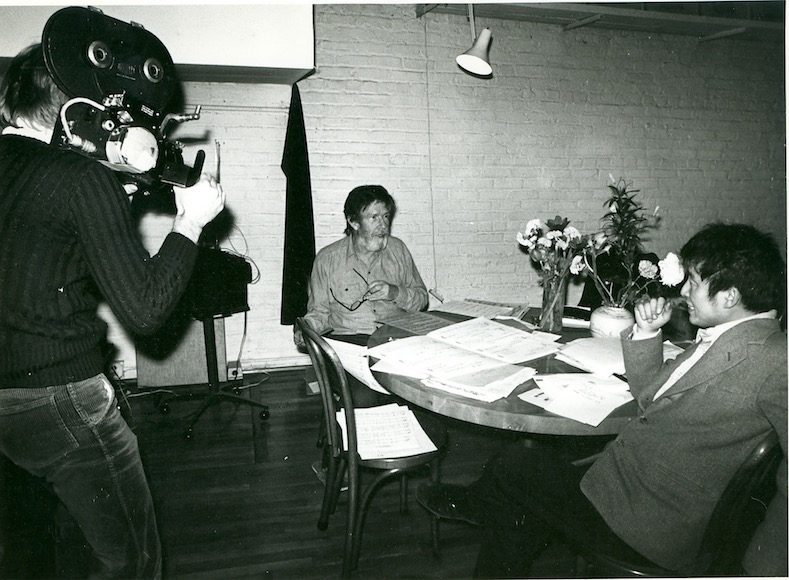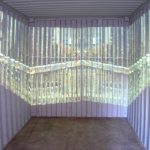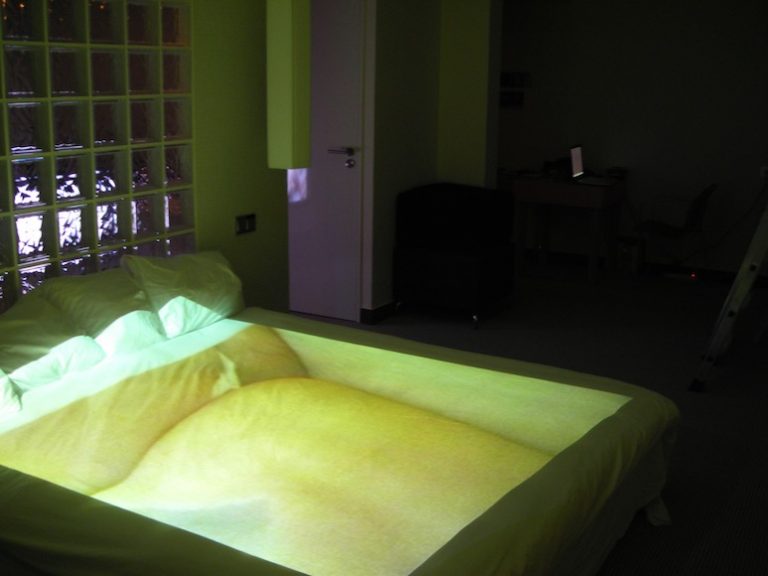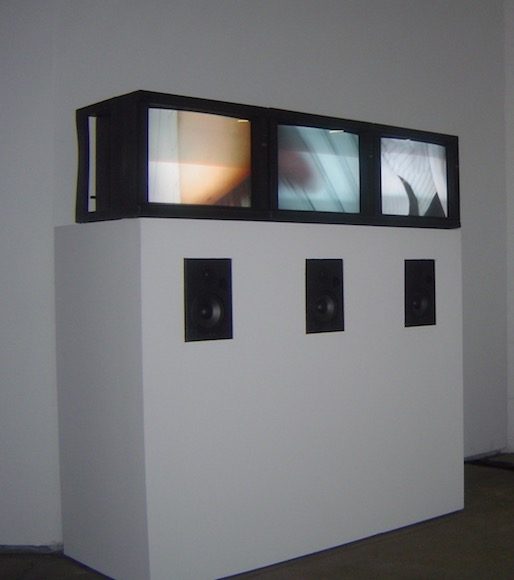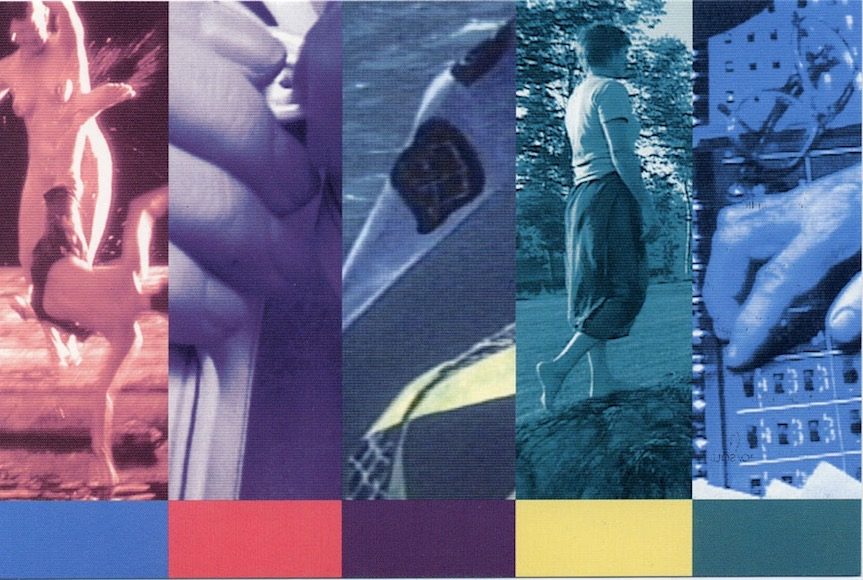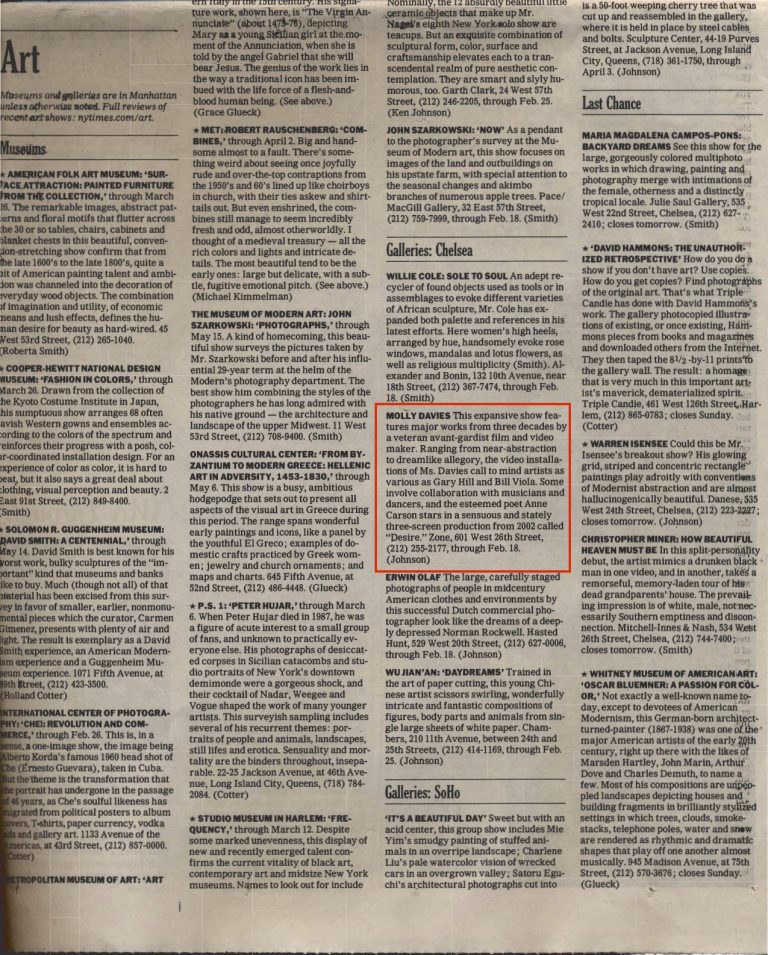“SHELTER SERRA SETS THE HOUSE ON FIRE”, by Ashley W. Simpson
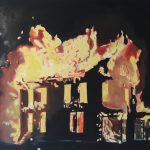
FASHION UNFILTERED, November 15, 2016
Over the past decade, the Bolia, California-raised artist Shelter Serra has recreated the Birkin in platinum silicone (2009’s “Homemade Hermes Birkin Bag”), transformed the Hummer into a baby blue rubber replica, and made “fake Roleys” available to the masses—selling the art items at just $40 each. This evening, Serra is celebrating the opening of his first solo exhibition, House on Fire at Baahng Gallery in New York City. The series is comprised of oil paintings and sculptures, works that address the direction—and implosion—of the American Dream, drawing in issues of luxury, surveillance, nostalgia, and classic Americana in its examination of what this consumption-driven ideal means in contemporary American society.
We spoke to Serra by phone—he was with his wife in Tokyo—on the night of the presidential election as returns were pouring in, and talked about how he came to these subjects, why the image of the “House on Fire” is so specifically American, and what we can do in the face of such anger. The timing of the discussion and exhibition opening couldn’t have been more harrowing, or relevant.
Ashley W. Simpson: I’m glad we’re talking now. I’m trying not to have an anxiety attack watching the results.
Shelter Serra: I was getting nervous and anxious.
AWS: I stopped looking. Anyway, I want to talk to you about this exhibition.
SS: Well, I guess it’s even more apropos now. I had been working on this group of work for eight or nine months, and one of the key paintings is called “House on Fire.” My idea behind it was the metaphor for the American consumeristic dream that either backfires or resets itself. The image came from the post-mortgage meltdown of 2007. Someone had actually burned down their house and committed suicide [inside it]; it was a foreclosure instance where it was like, he didn’t want the bank to have the house. It was in Georgia. And I just thought, Wow, that’s such an American “fuck you” to the system. [It also brought about] the idea of a country almost catching on fire. I hope Hillary wins, but I’m interested in how everyone has this perspective of the American Dream and what it has to do with commodification and dreams, and that’s different for every culture.
The oil paintings came out of working with sculpture and really wanting to go back to a more traditional medium that challenged my own personal technical abilities. Images are read, but the technical aspect should have a background of history. I try to make [the images] my own, but I do take from popular culture, different notions of American perspective— which is different from [that of] somebody from Tokyo or Germany or Spain. It has to do with the context. I always think that the context is an important factor in how people read things or how people interpret their experiences.
AWS: Aside from the burning house, how did you decide what images to work with?
SS: I think the notion of narrative was unavoidable. People try to make relationships between things they see to make sense of them. With something foreign, sometimes it’s more difficult for people to sequence things. I thought about creating a subtle timeline that maybe has to do with surveillance and technology and this idea of things being documented and how documentation is really a freezing of time. Not like in photography or stills from a movie, but in a way that captures the essence of a moment. There are some kids that are walking in a painting of after-school, and it’s that moment of time when you’re an adolescent and you have that notion of freedom between school and going home, and later in life, you look back and think, Wow, that was so fun. That notion of nostalgia. So the images were kind of all—I don’t want to use the word pulled—but they were pulled together to create this pseudo-narrative like in a picture book. So the idea was to put together images that were closely related, but fed into this idea of technology and surveillance and capturing what would be almost a moment in time.
AWS: How do you see this concept of the American dream and commodification right now? You’re looking at different versions of what that American Dream can be.
SS: The acquisition or consumption of images is different from acquiring an iPhone or a new house or car, but all of those things become kind of like building blocks in creating a person’s identity, and more and more, our society becomes peppered with these homogenous relations. Like, everybody feels like they have to have the latest phone. Everybody feels like their clothes get old and they have to renew them—but you know, good clothes last a long time—so the whole notion of style and fashion and trends kind of progresses the notion of alienation and inclusion.
I guess the idea of the images in the painting that are part of the show is that there seems to be a kind of a juxtaposition of different times going on, where now, even the seasons are all changing. The world is a changing place and people don’t want things to change. That notion of change is really exciting and adventurous. But the reality is that people revert back to a certain type of comfort. And unfortunately, that might be what’s happening with this election. In my mind, the idea of challenging the status quo is what progresses thought, progresses art, it progresses everything from architecture to engineering to music. You need people to break the rules, and the idea of breaking the rules is super attractive, but in reality, people don’t really want to take that jump off the high dive. They would rather sit there and watch somebody else do it.
AWS: Or they would rather stay within their comfort zone even if that space is miserable.
SS: That is my notion of the American Dream. It is that comfort zone. And it’s different for everybody. If you have the latest handbag or have a gun or you have the latest watch—that almost creates this comfort zone that people have subscribed to almost without thinking.
AWS: And how do you relate this back to the work you’ve done in the past? Obviously, there are some similar issues of commodification and luxury.
SS: I relate it to how things constantly have to renew themselves, but there are certain things that always float to the top, whether it be a Birkin bag or a Rolex or maybe even a Hummer truck. At a certain point, it was maybe being used for the American military and it was also the most popular car on the street that was like a gas guzzler. So, there are certain things that become identifiable as parts of people’s persona. Or extensions of their personality. But they’re just objects. They’re replaceable. And that’s where this notion of consumerism in my mind is this constant driving force of American culture, and people get programmed into thinking that they need these things when in reality, less is more.
AWS: What do you hope people take away as they engage with this exhibition?
SS: As an artist, my goal is to change the way people think. The smallest notion of putting something on the street and seeing something in a different light, or looking twice at something—that idea of slowing things down and looking at things for what they are and maybe not for what they are in a greater whole. And what that has to do with trends and going back to that word commodification is that everybody does have individuality. That notion of individuality is something I think everyone needs to cherish. It’s almost like going with your intuition. Don’t second guess yourself. Go with what you think is right and don’t let people change your goals. Because everyone is different and that’s what makes the world go round. And I guess as an artist, I’m against the notion of homogeny and things all kind of being the same. The idea of imagination is something that everybody needs to embrace. As things become easily identifiable and consumable, people loose the sense of imagination. I think that’s something people need to hold on to because you can ask questions of your environment instead of accepting the status quo.
AWS: What’s next for you?
SS: Continuing paintings that I think address skewed notions of Americana, but also working on installation pieces and bigger works that fill an environment. Something like a windmill being knocked down and plated gold. Half-scale. I made an Abrams tank for a collector in the Philippines that went out in front of his house. Instead of a statuary lion or a birdbath, he had a big tank. So, [I want to extend] that into a greater realm of sculpture or installation with the paintings. And there’s a show coming up in Marfa, Texas, that will kind of be fences and lawns and how fences in lawns are kind of seen as extensions of the home. So, I’m going to be working in that kind of extension of the domestic realm. I think it’s important for me right now to investigate that.
AWS: We’re all kind of thinking about fences right now…
SS: Well, Saudi Arabia just put up a 600-mile long fence to keep ISIS out, which I think is totally bizarre.
AWS: That’s completely bizarre.
It’s a pretty long fence. They’re doing it all over the world. That kind of incorporates some of the paintings I’m doing that have surveillance perspectives. The idea of technology and surveillance and double fences. The fence is never enough. The fence has to be observed. It’s like this snowball effect that we’ve created. That duality of the fence is something that I’m interested in exploring in the future.
House on Fire is on view at Baahng Gallery, located at 790 Madison Ave, New York, NY, through December 27th.
Source:
http://fashionunfiltered.com/culture/2016/shelter-serra-house-on-fire-baahng-gallery-exhibit
Related:

“SHELTER SERRA SETS THE HOUSE ON FIRE”, by Ashley W. Simpson
Categories: news
Tags: Shelter Serra
